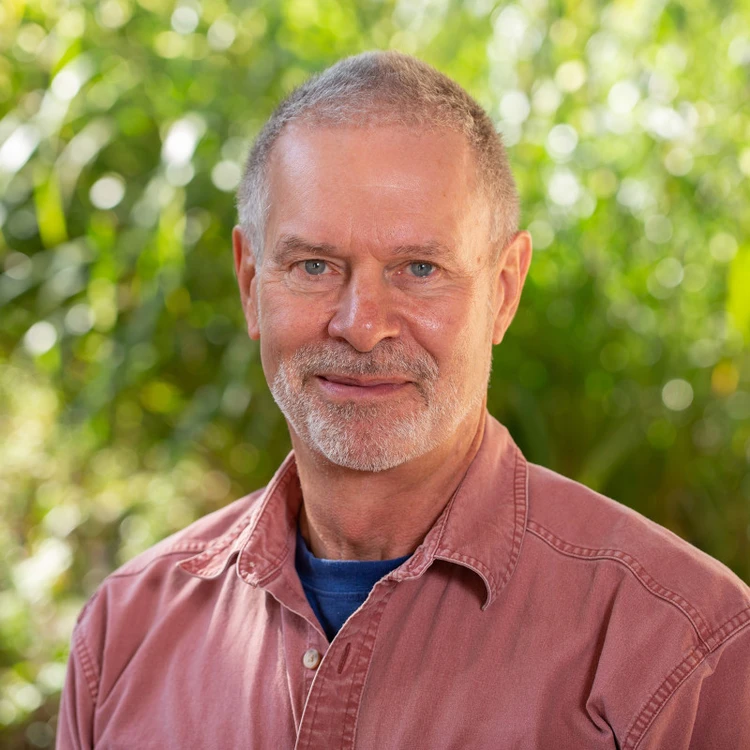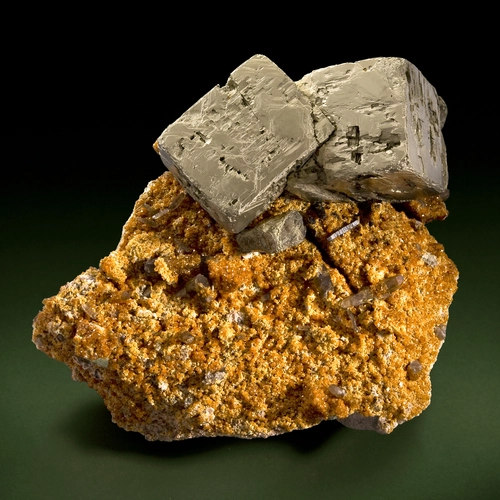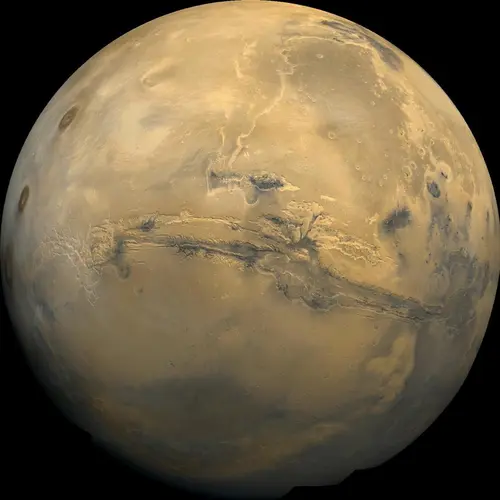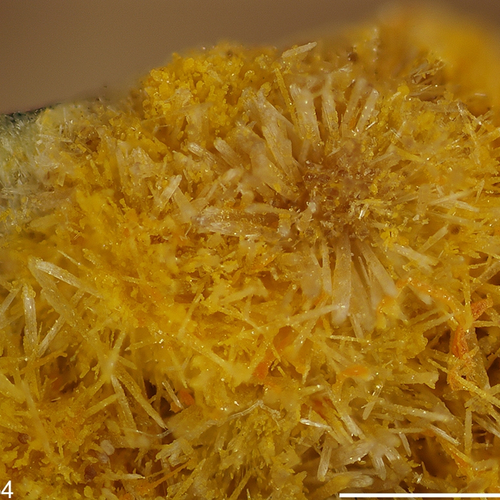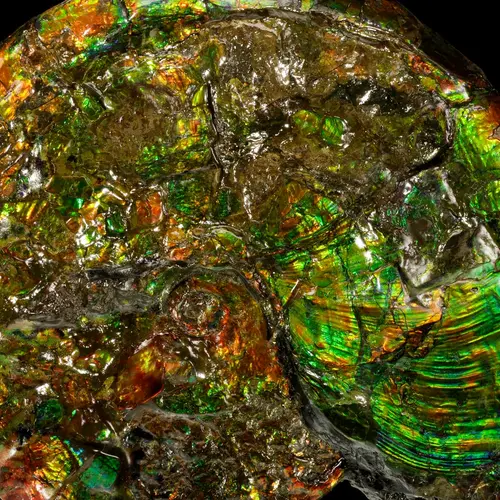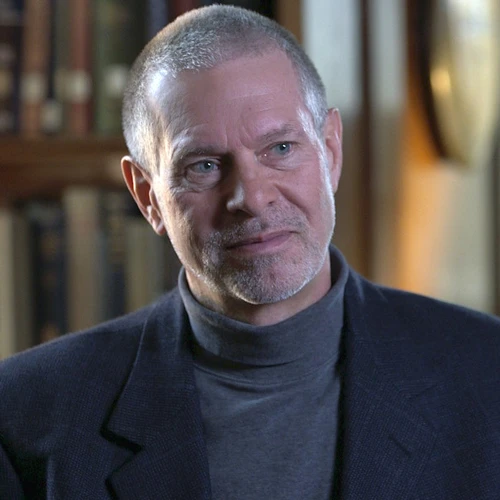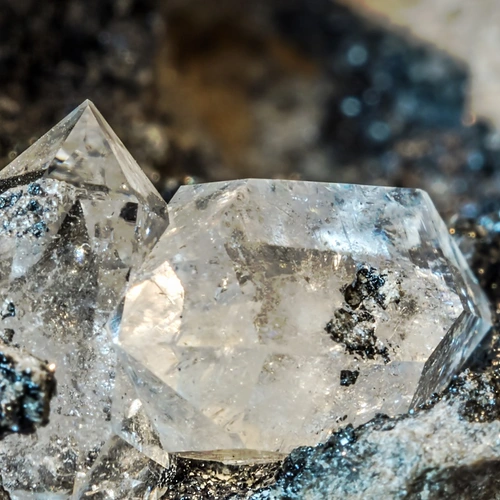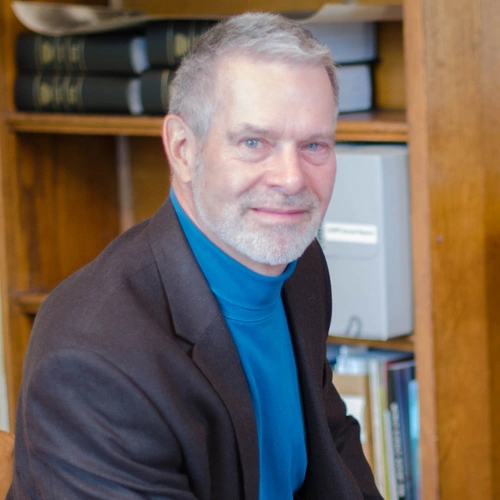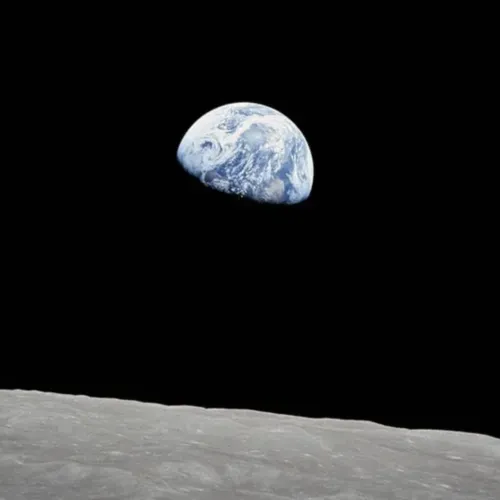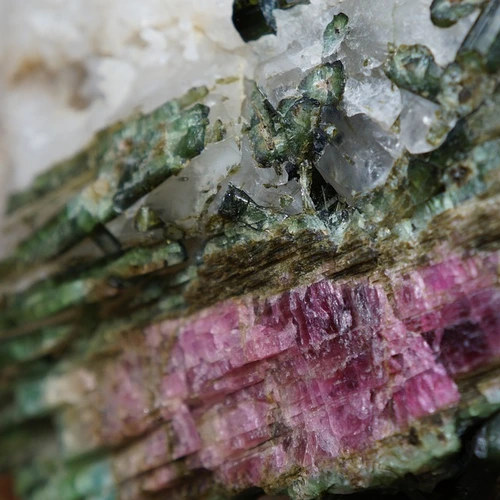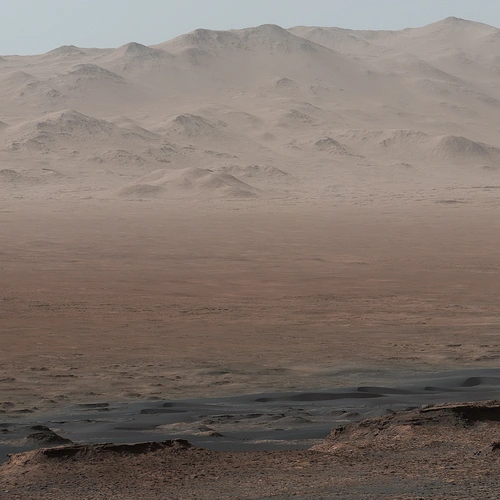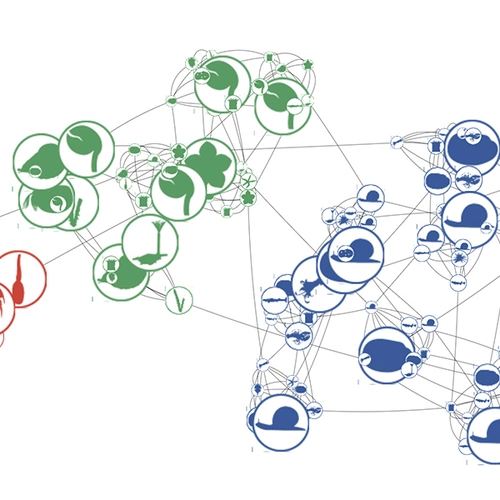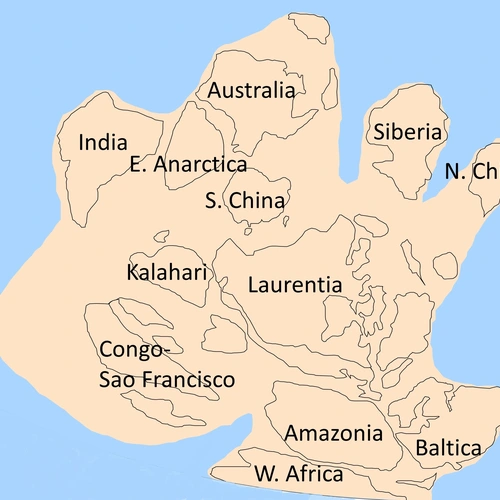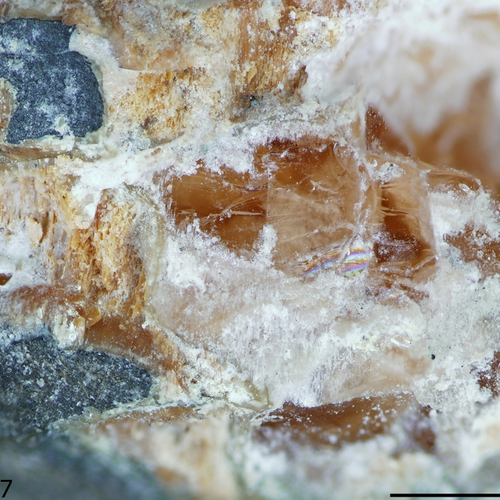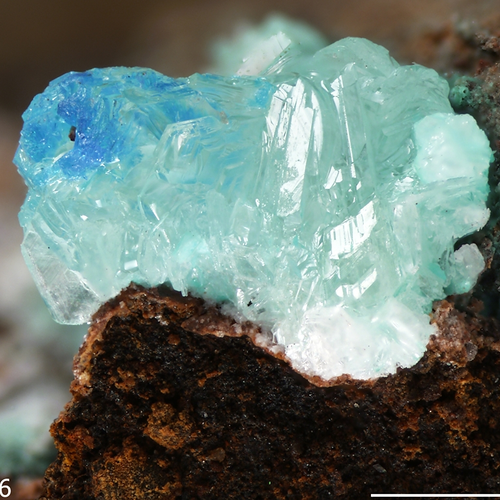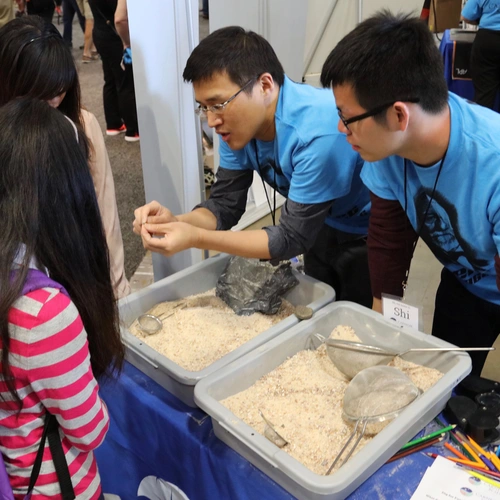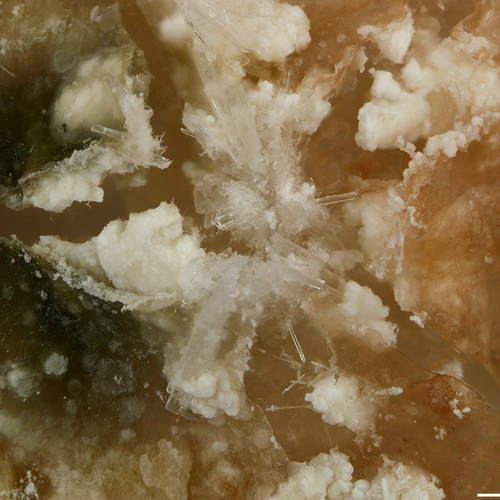Overview
Robert Hazen’s recent research in part examines the roles of minerals in life’s origins, with a focus on mineral-catalyzed organic synthesis and interactions between biomolecules and mineral surfaces. Since 2008 Hazen and his colleagues have explored “mineral evolution” and “mineral ecology”—new approaches that exploit large and growing mineral data resources to explore the co-evolution of the geo- and biospheres.
A Fellow of the American Association for the Advancement of Science, the Geochemical Society, and the Geological Society of America, he received the 2016 Roebling Medal, the Mineralogical Society of America Award and MSA’s Distinguished Public Service Medal, the American Chemical Society Ipatieff Prize, the ASCAP‑Deems Taylor Award, the Educational Press Association Award, and was the 2012 recipient of Virginia’s Outstanding Faculty Award. He has presented numerous named lectures and was a Distinguished Lecturer for Sigma Xi and MSA, for which he is a past President. The biomineral “hazenite” was named in his honor.
In 2008 Hazen was named Principal Investigator and, in 2011 Executive Director of the Deep Carbon Observatory (DCO), a 10-year effort to achieve fundamental advances in understanding the chemical and biological roles of carbon on Earth (http://deepcarbon.net). With significant funding from the Alfred P. Sloan Foundation, the DCO is an international community of more than 1,000 collaborators from 45 countries with total anticipated funding from governmental, corporate, and private sources approaching $1 billion.
In October 2016, Hazen retired from a 40-year career as a professional trumpeter. He performed with numerous ensembles including the Metropolitan, Boston, and Washington Operas, the Royal, Bolshoi, and Kirov Ballets, the Boston Symphony, the National Symphony, and the Orchestre de Paris. Prior to his retirement he was a member and soloist with the Washington Chamber Symphony, the National Philharmonic, the Washington Bach Consort, and the National Gallery Orchestra.
He received a BS and SM in geology at MIT, a Ph.D. at Harvard University in Earth science, and was NATO Postdoctoral Fellow at Cambridge University.
Research
Minerals reveal the nature of the co-evolving geosphere and biosphere through billions of years of Earth history.
“Mineral Evolution” is the study of the changing diversity and distribution of minerals, which are the consequence of a succession of physical, chemical, and ultimately biological processes through more than 4.5 billion years of Earth history. In its first presentation (Hazen et al. 2008), as well as several subsequent publications (Hazen and Ferry 2010; Hazen 2010, 2012), Hazen and his team outlined mineral evolution in a qualitative framing of 10 stages, from pre-terrestrial minerals preserved in meteorites to biominerals of the Phanerozoic Eon (the last 541 million years).
Learn moreHazen and his team pioneered applications of mineral network analysis.
A fundamental goal of mineralogy and petrology is the deep understanding of mineral phase relationships and the consequent spatial and temporal patterns of mineral coexistence in rocks, ore bodies, sediments, meteorites, and other natural polycrystalline materials. The multi-dimensional chemical complexity of such mineral assemblages has traditionally led to over simplified approximations of these natural systems. Network analysis provides a dynamic, quantitative, and predictive visualization framework for employing “big data” to explore complex and otherwise hidden higher-dimensional patterns of diversity and distribution in such mineral systems.
Learn more
Earth’s mineralogical diversity arises from both deterministic processes and frozen accidents. Hazen and his team apply statistical methods and comprehensive mineralogical databases to investigate chance versus necessity in mineral diversity-distribution relationships. Hundreds of mineral species, including most common rock-forming minerals, distinguish an “Earth-like” planet from other terrestrial bodies. However, most of Earth’s ~5000 mineral species are rare, known from only a few localities.
Hazen and his colleagues demonstrated that, in spite of deterministic physical, chemical, and biological factors that control most of our planet’s mineral diversity, Earth’s mineralogy is unique in the cosmos.
Mineral EcologyIn 2007 Robert Hazen began to study the changing diversity and distribution of minerals in near-surface environments of Earth and other terrestrial planets and moons through deep time—a field that he called “mineral evolution.” In the initial 2008 publication in American Mineralogist on this idea, Hazen and coworkers divided Earth’s mineralogical history into ten stages, each of which saw significant changes in near-surface mineralogy. Principal findings include the realization that different planets and moons achieve different stages of mineral evolution. Furthermore, Hazen and colleagues proposed that 2/3rds of known mineral species on Earth probably could not have appeared prior to the origin and evolution of life. A report in Science called this original and widely discussed framing of mineral research “the first paradigm shift in mineralogy in 200 years.”
A dozen publications, including studies of the minerals of uranium; Be and B; Hg, Br, and I; Mo; and carbon; as well as clay minerals; have followed the original 2008 article, and many more manuscripts are in progress. Hazen’s 2013 article on “Paleomineralogy of the Hadean Eon” ties mineral evolution to considerations of life’s origins, while his 2012 book, The Story of Earth, expands on all of these themes with a narrative of Earth’s co-evolving geosphere and biosphere.
Robert Hazen launched the Deep Carbon Observatory (DCO) in 2009 with support from the Alfred P. Sloan Foundation, and served as the program's Executive Director through 2019, when the program ended.
DCO was a ten-year international research program that aimed to promote a transformational understanding of the chemical and biological roles of carbon in Earth's interior. Organized into four science communities: Reservoirs and Fluxes, Deep Life, Deep Energy, and Extreme Physics and Chemistry, DCO grew into a community of more than 1000 scientists in over 35 countries. DCO also includes cross-community initiatives in data science, modeling and visualization, field studies, and instrumentation.
Though the initial grant has ended and Hazen is no longer the Executive Director, the DCO community continues through the Institut de Physique du globe de Paris (IPGP).
Learn moreHazen applied this philosophy to mineralogy and began to see important connections between mineralogy and life’s origins and evolution. His earliest studies in the mineralogical co-evolution of the geosphere and biosphere were conducted in collaboration with Geophysical Laboratory colleagues George Cody (an organic geochemist) and Hatten S. Yoder Jr. (a renowned experimental petrologist), and focused on mineral catalyzed prebiotic organic reactions.
Their initial studies, published in Science, Nature, and elsewhere, demonstrated the facile mineral-mediated production of ammonia from di-nitrogen gas, the formation of key biomolecules from CO2 and water; and amino acids at hydrothermal conditions in the presence of transition metal oxide and sulfide minerals. An important finding was that different transition elements mediate different kinds of organic reactions. This research pointed to the likelihood that minerals played a variety of roles in the origins of life.
Learn moreIn the summer of 1997, at the Gordon Research Conference on the Origin of Life, Hazen got into a conversation with Harvard University paleontologist Andy Knoll about how standard analytical techniques of mineralogy might be applied to the study of fossils.
That conversation led to a series of collaborations with Knoll’s students. Hazen's first efforts were simply to map fossil carbon in plant fossils, such as ancient wood and a variety of species from the famed Rhynie Chert of Scotland. Kevin Boyce worked at the Geophysical Lab with Marilyn Fogel on isotopes and with George Cody on x-ray microscopy as well. Hazen has subsequently worked with Nora Noffke (Old Dominion University) on a variety of Archean samples with evidence of ancient microbial mats.
Learn moreIn parallel to studies of biosynthesis, Hazen began to investigate the nature of mineral surfaces and their interactions with small organic molecules, with a special emphasis on the origins of biochemical homochirality. In a 2001 study in the Proceedings of the National Academy of Sciences, Hazen demonstrated experimentally for the first time chiral selection of organic molecules on chiral mineral surfaces (specifically, D- and L-aspartic acid on calcite 214-type faces) followed by study of other chiral systems.
This paper, one of his most widely cited works, has had significant influence on the field of chirality, which is dominated by the technological challenges associated with the manufacture of chirally pure pharmaceuticals. He also presented papers on the widespread natural occurrence of chiral mineral surfaces, notably high-indices faces on achiral minerals.
Subsequent studies in collaboration with Dimitri Sverjensky and colleagues at Johns Hopkins University and the University of Delaware have employed classic potentiometric titration and batch adsorption methods coupled with IR spectroscopy, x-ray, and neutron techniques to document molecular-scale details of such interactions. This work has revealed that molecular adsorption is highly dependent on pH and ionic strength of the solution, as well as solute concentration. In the case of glutamate adsorption on rutile, for example, a transition from a “lying down” to “standing up” configuration is seen at high solute concentrations—a phenomenon driven by surface crowding. Hazen’s 2006 MSA Presidential Address reviewed the context and first results from some of these developments in mineral surface science [187].
CV
- B.S. Earth Science, Massachusetts Institution of Technology, 1970
- S.M. Earth Science, Massachusetts Institution of Technology, 1971
- Ph.D. Mineralogy & Crystallography, Harvard University, 1975
- International Mineralogical Association, Medal of Excellence (2021)
- Named #2 on AcademicInfluence.com list of the most influential Earth scientists (2021)
- John Templeton Foundation, Ideas Challenge Essay Award winner (2020)
- Dialogues of Discovery Lecturer, Dartmouth College (2020).
- Woodford-Eckis Lectureship, Pomona College (2020)
- University Commencement Speaker, Old Dominion University, Invited (event cancelled by Covid-19 concerns; 2020)
- Elected Foreign Member, Russian Academy of Sciences (2019)
- Elected Fellow, American Geophysical Union (2019)
- Petroleum Museum (Midland TX), Arlen Edgar Distinguished Lecture (2019)
- Janelia Farms (Warrenton VA), Dialogues of Discovery Lecture (2019)
- Science Sunday Lecture, Ohio State University (2019)
- Woods Hole Oceanographic Institute, Science Friday Lecture (2018).
- Outstanding Student Paper Award, AGU Annual Meeting (2018; served as mentor)
- Frontiers Lecturer, University of Utah (2017).
- Elected Honorary Membership, Russian Mineralogical Society (2017)
- Vienna Museum of Natural History, Guest of Honor at opening of their “Mineral Evolution” exhibit (2017)
- The Chauncey Holmes Lecture, Syracuse University (2017)
- Roebling Medal, Mineralogical Society of America (2016)
- The Morgan Lecturer, Appalachian State University (2016)
- Elected Fellow, Geological Society of America (2015)
- Austrian Academy of Sciences, Mineral Evolution symposium held in his honor (2015)
- The Leibnitz Lecturer, University of Potsdam (2015)
- The Ingerson Lecturer of the Geochemical Society (2014)
- Foster-Hewitt Lecturer, Lehigh University (2014)
- Elected Fellow, Geochemical Society (2014)
- Plenary Keynote Lecturer, Society of Economic Geology (2014)
- Plenary Keynote Lecturer, American Society of Cell Biology (2014)
- Keynote Lecturer, Gordon Research Conference on Biomineralization (2014)
- Keynote Lecturer (2 sessions), International Mineralogical Association (2014)
- Capital Science Lecturer, Carnegie Institution (2014)
- Arthur Storke Lecturer, Columbia University (2013)
- Finalist, Phi Beta Kappa Science Book Prize (2013)
- Semi-Finalist, Royal Society (London) Science Book Prize (2013)
- Nobel Symposium Lecturer, Royal Academy, Stockholm, Sweden (2013)
- Linus Pauling Lecturer, Portland, Oregon (2013)
- Qualline Lecture, University of Texas (2013)
- Naff Symposium Lecture, University of Kentucky (2013)
- Plenary Lecturer, Goldschmidt Conference (2013)
- Condon Lecture, Oregon State University (2012)
- Moore Lecture, Oregon State University (2012)
- Vetlesen and Fish Lectures, University of Rhode Island (2012)
- Virginia Outstanding Faculty Award (2011)
- Linnaeus Prize and Lecture, Uppsala, Sweden (2011)
- Keynote Lecturer, Deep Carbon Cycle Workshop, Sendai, Japan (2011)
- Keynote Lecturer, American Association for the Advancement of Science, Annual Meeting, Washington DC (2011)
- Distinguished Scientist Lecture, Trinity University, San Antonio, TX (2010)
- Keynote Lecturer, Origins of Life Symposium, Groningen, Netherlands (2010)
- Keynote Lecturer, Synthetic Biology Symposium, Vienna, Austria (2010)
- Pardee Symposium Organizer, Geological Society of America, Denver, CO (2010)
- Keynote Lecturer, International Mineralogical Association, Budapest, Hungary (2010)
- The Bradley Lecture, Geological Society of Washington (2010)
- Mineralogical Society of America, Distinguished Public Service Medal (2009)
- The Baldwin Lecture, Miami University of Ohio (2009)
- The Charter Lecturer, University of Georgia (2009)
- “Mineral evolution” selected by Science News as a “science story of the year” (2008)
- Sigma Xi, Distinguished Public Lecturer (2008-2010)
- National Science Foundation, Biosciences Directorate, Distinguished Public Lecturer (2007)
- Elected Chair, Gordon Research Conference on the Origin of Life (2007-2008)
- The Robert Reed Lecturer, The Ohio State University (2007)
- The Elsasser Lecturer, The Johns Hopkins University (2007)
- The Darwin Lecturer, Northwestern University (2007)
- The Sokol Lecturer, Montclair State University (2007)
- Invited Editor of Elements: Volume 1, #3, “Genesis” (2005); Volume 6, #1 “Mineral evolution” (2010)
- Mineralogical Society of America, Elected Vice President (2003-2004) and President (2004-2005); Distinguished Lecturer (2003-2004)
- “Life’s Rocky Start” selected for Best Science Writing of 2001, Natalie Angier, Editor. (2002)
- Distinguished Lecturer, Smithsonian Institution Senate of Scientists (2001)
- Elizabeth Wood Science Writing Award, American Crystallographic Association (1998)
- Physics Today 50th Anniversary Essay Contest, Honorable Mention (1998)
- The Dibner Lecturer, Smithsonian Institution (1996)
- Educational Press Association Award, for the Time magazine essay “Why my kids hate science” (1992)
- ASCAP Deems Taylor Award, for The Music Men (with Margaret Hazen, 1989)
- The Ipatief Prize of the American Chemical Society (1986), “To recognize outstanding chemical experimental work in the field of high pressure.”
- The Mineralogical Society of America Award (1982) “For outstanding contributions to the chemistry of crystals at high pressure.”
- Geophysical Laboratory Postdoctoral Fellowship (1976-1978)
- NATO Postdoctoral Fellowship in Science (1975-1976)
- The Bowdoin Prize (Harvard University essay award), Honorable mention (1974)
- National Science Foundation Graduate Fellowship (1971-1974)
- Ancient and Honorable Artillery Society Prize for history, MIT (1973)
- United States Geological Survey Junior Field Assistant (1970)
- Elected President, MIT Geology Club (1969-1970)
- Phi Lambda Upsilon (National Chemistry Honorary), MIT (1969)
- Baton Society, MIT music honorary (1969)
- Elected President, MIT Symphony Orchestra (1968-1970)
- Outstanding Musician Award, New York State Invitational, Fredonia, NY (1966)
- New Jersey All-State Orchestra and All-State Band (1965-1966)
- The Harvard Prize for the outstanding underclassman, Ridgewood High School (1965)
- Symphony in C: Carbon and the Evolution of (Almost) Everything (2019)
-
The Story of Earth: The First 4.5 Billion Years, from Stardust to Living Planet (2012)
-
The Joy of Science (2001)
-
Origins of Life (2005)
-
The Diamond Makers (1999)
-
The New Alchemists: Breaking Through the Barriers of High Pressure (1993)
-
The Poetry of Geology (1982)
-
Great Ideas of Science: A Reader in the Classic Literature of Science (2009)
-
Carbon in Earth (2018)
-
The Physical Sciences: An Integrated Approach--Laboratory Workbook (1996)
- Founding Member, Cambridge Symphonic Brass Ensemble, 1967-1975
- Solo Trumpet, Emmanuel Bach Orchestra, Boston, 1973-1975; Guest soloist 2006-2008
- Founding Member, Washington Chamber Symphony, 1977-2003
- Founding Member, Washington Chamber Orchestra, 1980-1988; European tour, 1986
- Member, National Gallery Orchestra, 1977-2010
- Member, Washington Bach Consort, 1977-2010; German tour 2000
- Founding Member, National Chamber Orchestra, 1979-1985
- Founding Member, and Board of Directors, National Philharmonic, 2004-2016
- Alternate Musician, National Symphony Orchestra, 1978-2005; national tour, 2004
- Member, Filene Center (Wolf Trap and Wolf Trap Opera) Orchestra, 1977-2006
- Freelance Union musician, Boston and Washington, 1971-2016
- Senior Staff Scientist, Earth and Planets Laboratory (formerly the Geophysical Laboratory), Carnegie Institution for Science, 1978-present
- Executive Director and Founding PI, Deep Carbon Observatory, 2008-2019
- Clarence Robinson Professor of Earth Sciences, George Mason Univ., 1989-2019
- President, Robert & Margaret Hazen Foundation, 2008-present
- Research Associate, Smithsonian Institution, Department of Paleobiology, 2007-present
- President, Hazen Associates, Ltd., 1994-2007
- Professional Trumpeter, 1965-2013
- Visiting Researcher, Univ. California at Santa Barbara, Chemistry Department, 1987
- Summer Faculty, IBM T. J. Watson Research Center, 1978
- Postdoctoral Research Associate, Geophysical Laboratory, 1976-1978
- NATO Postdoctoral Fellow, University of Cambridge, Department of Mineralogy and Petrology, Cambridge, England, 1975-1976
- Research Assistant and Teaching Fellow, Harvard, 1973-1975
- Field Assistant, U. S. Geological Survey, Summers of 1970 and 1971
- Curator of Geological Collections, M.I.T., 1967-1970
- Laboratory Assistant, Isotopes, Inc., Westwood, NJ, Summer, 1967
- Mineralogical Society of America
- MSA Award and Life Fellow, 1982
- Program Committee, 1978-80
- MSA Award Committee, 1983
- Associate Editor, 1983-87
- Councilor, 1987-90
- Mineral Physics Representative, 1990-94
- Special Editor, 1997-98
- Nominating Committee, 2002
- Vice President, 2003-04
- President, 2004-05
- Past President, 2005-06
- Chairman Benefactors Committee, 2005-2008
- Distinguished Public Service Award, 2009
- Member (2011-2015) and Founding Chairman, Data Science Committee
- Roebling Medal, 2016
- Distinguished Public Service Award Committee, 2019-present
- International Society for the Study of the Origins of Life
- Elected to the Executive Council, 2011-2014
- American Geophysical Union
- Elected Fellow, 2019
- Mineral Physics Committee Executive Panel, 1984-88
- Macelwane Award Committee, 1986-88
- Journal of Geophysical Research Associate Editor, 1985-87
- Editor of “Mineral Physics News,” 1984-1987
- History of Geophysics Committee
- Sullivan Award Committee, 1999-2002
- National Research Council
- Committee on K-12 Science Education and Executive Committee, 1995-2001
- National Science Education Standards, writing team
- Working Group on Teaching Evolution and coauthor Teaching About Evolution and the Nature of Science writing team for 3rd edition of Evolution and Creationism, 2004-2007
- Physics and Chemistry of Earth Materials Steering Committee, 1985-87
- Board of Earth Sciences Committee on Education
- National Academy of Sciences, Science and Entertainment Exchange, Advisory Board, 2008-2016
- National Science Foundation
- Biosciences Directorate Advisory Board, 2009-2012
- Distinguished Lecturer, 2012 and 2017.
- American Association for the Advancement of Science
- Fellow, 1996
- Committee for the Public Understanding of Science, 2001-2008
- Geological Society of America
- Fellow, 2015
- Pardee Symposium Chair, 2012
- Geochemical Society
- Plenary Lecturer, 2012
- Fellow, 2013
- American Chemical Society
- Ipatief Prize, 1986
- American Institute of Physics
- Andrew Gemant Award Committee, 1997-2003
- Geological Society of Washington
- Bradley Lecturer, 2011
- Sigma Xi
- Distinguished Lecturer, 2008-2010
- History of Earth Science Society
- National Committee for the History of Geology
- Executive Committee and Secretary, 1978-1983
- International Committee for the History of Geology
- Corresponding Member, 1983-1989
- International Federation of Musicians
- AFL-CIO, 1971-present
The Hazen Collection of Trilobites, which was begun in 1969, includes approximately 2,000 specimens representing almost 1,000 different species from six continents. The collection has strong coverage of specimens from the Cambrian, Ordovician and Devonian of Morocco, the Ordovician of Russia, the Cambrian and Silurian of Bohemia, and all periods from the United Kingdom and North America.
Learn more- GREAT IDEAS IN SCIENCE (PROV301, formerly UNIV301)
- SCIENTIFIC ETHICS (GEOL315-001 / GEOL500-001 / EVPP505-005)
- THE ORIGINS OF LIFE (EVPP505-002 & GEOL406-001)
- SYMMETRY (CVPA399)
Recent Talks and Outreach
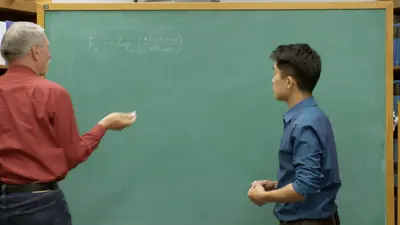
Is Information a Fundamental Force of the Universe?
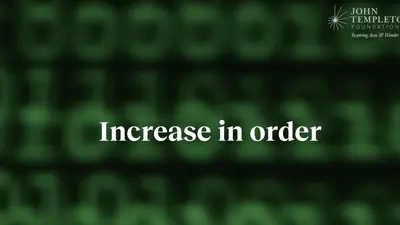
The missing law of nature, and how we found it | Robert Hazen
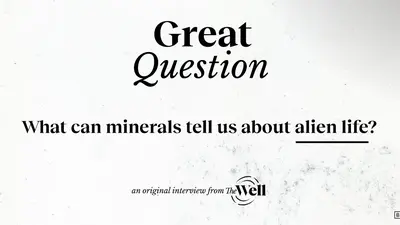
The biggest clue for alien life? The mineral kingdom. | Carnegie astrobiologist Robert Hazen
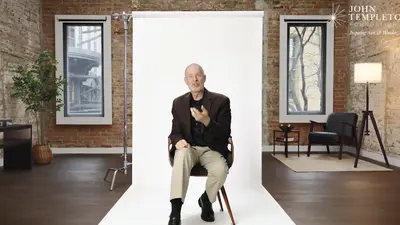
The vibrant colors of Earth’s 4.5 billion year lifespan | Robert Hazen
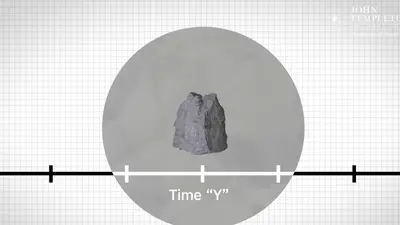
The mindblowing way rocks “survive” and evolve | Robert Hazen
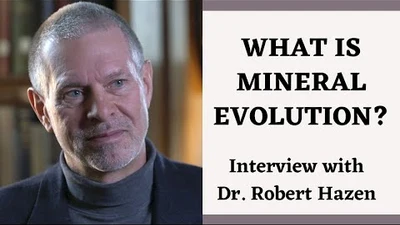
History of our universe through the eyes of minerals | Dr. Robert Hazen |
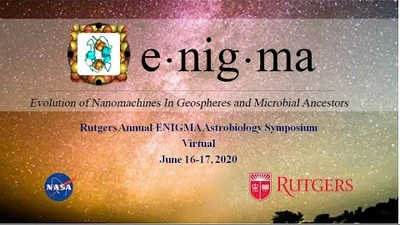
Bob Hazen - Theme 3: THE FIRST ENZYMES? Roles of MineralMolecule Interactions in the Origins of Life
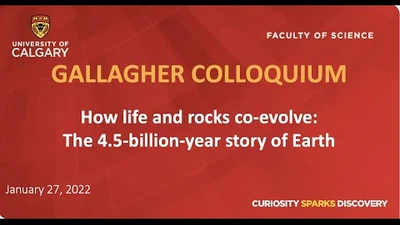
Gallagher Colloquium: How life and rocks co-evolve: the 4.5-billion-year story of Earth
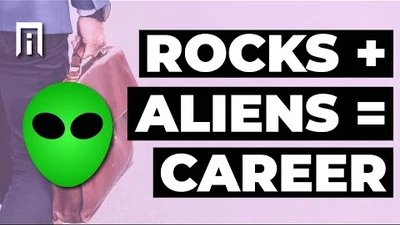
Robert Hazen talks with Karina about how rocks and aliens become a career
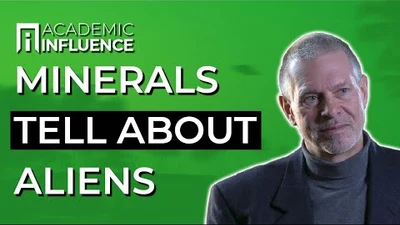
Robert Hazen on what minerals can tell us about aliens
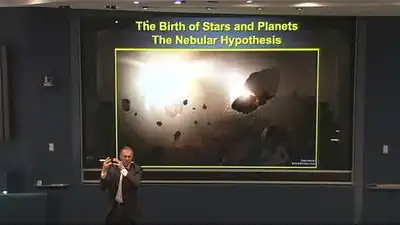
Robert Hazen - Mineral Evolution and Ecology and the Co-evolution of Life and Rocks (March 11, 2015)
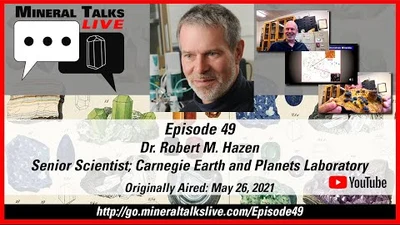
Mineral Talks LIVE - Episode 49 - Dr. Robert Hazen; Senior Scientist, Carnegie Earth & Planets Lab.

The Story of Earth | Robert Hazen & Martin Van Kranendonk
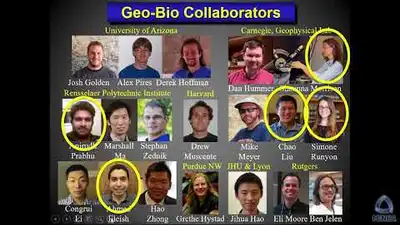
Mineral Evolution and Ecology Tracing Earth History Through Time and Space Robert Hazen Geology
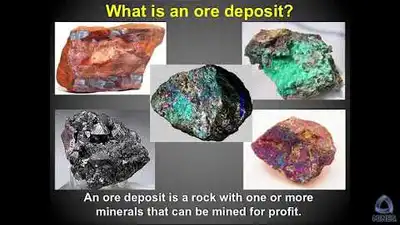
Big Data Geology Visualizing Earth's Co Evolving Geosphere and Biosphere Robert Hazen Geology
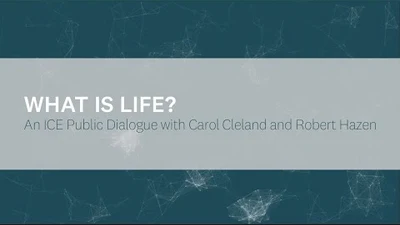
WHAT IS LIFE? An ICE Public Dialogue with Carol Cleland and Robert Hazen
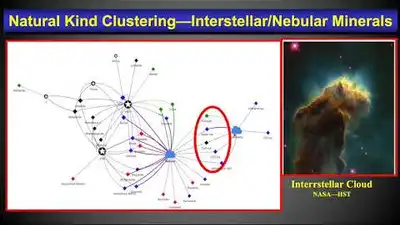
An Evolutionary System of Mineralogy: Insight into geo-bio coevolution, RM Hazen, Goldschmidt 2020
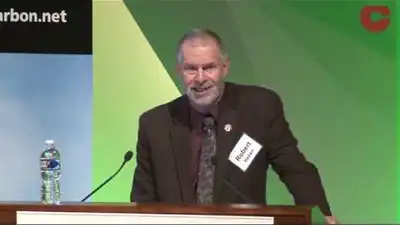
Session V: Future of Deep Carbon Science - Robert Hazen
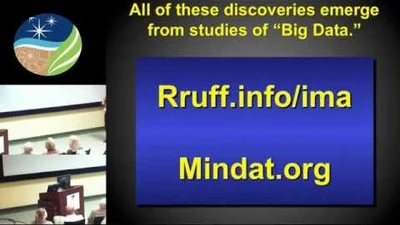
Bob Hazen, "Private Lives of Minerals"
